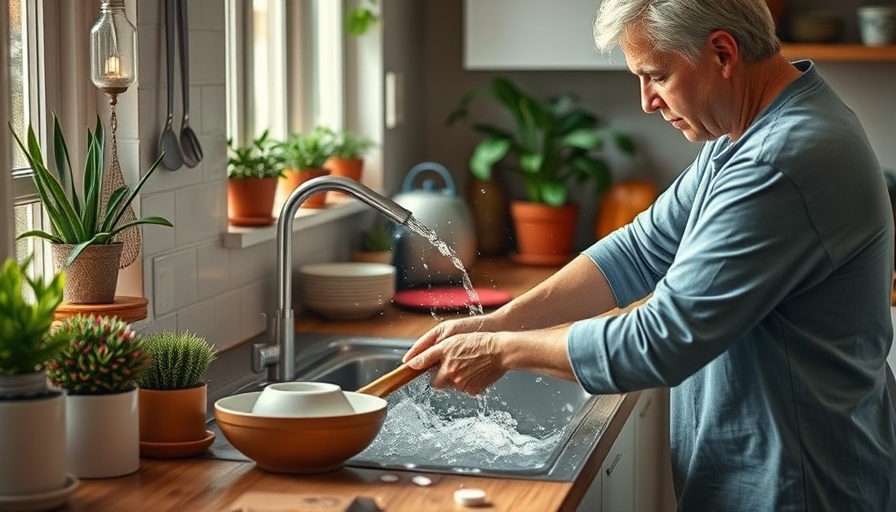
Transform Your Space: Habits of Professional Cleaners
Many of us lead busy lives—between work, family, and social obligations, cleaning often falls to the bottom of the priority list. However, taking a cue from professional cleaners can help turn the tide on your relationship with your home. These experts have mastered nightly habits that make a significant difference in maintaining a clean, inviting space. By integrating these practices into your routine, you can ensure that you greet each morning in a fresh environment.
1. Tidy Up: A Quick Sweep of the Home
As Pam Clyde, president of BritLin Cleaning LLC, aptly states, “Once we sit down to relax, the last thing we want to do is get up again.” To counter this, try implementing a quick evening tidy-up session. Encourage your family to participate in a “mad dash” around the home, picking up clothes, toys, and anything else that’s out of place. This not only keeps your living space neat but makes the area more enjoyable for winding down in the evenings.
2. Kitchen Care: A Sparkling Culinary Space
Your kitchen deserves special attention at the end of the day. According to Elena Ledoux from Superb Maids, “It’s nice to wake up to a clean kitchen and have a cup of coffee in a peaceful environment.” The kitchen is a germ hotspot, so wiping down surfaces and cleaning high-touch areas before bed prevents bacterial growth and makes morning snack prep seamless. Remember, a clean kitchen is a foundation for a stress-free morning.
3. The Trash Task: Not as Mundane as It Seems
Taking out the trash might not be anyone’s favorite chore, but it’s essential to avoid unwanted odors and pests. As Clyde recommends, empty all trash cans at night, focusing especially on the kitchen bin after dinner. Pro tip: set a simple routine where the trash is taken out every evening, and you'll notice a significant improvement in pleasant home smells.
4. Decluttering: A Cleaner Canvas
Clutter can pile up faster than you think. Tackling it each night can save you from larger messes in the future. Ledoux advises quickly sorting through mail and throwing away junk, as well as picking up stray laundry items. This small effort prevents clutter from becoming overwhelming, setting a calming atmosphere before sleep.
5. Dishes Matter: Waking Up to Cleanliness
Dishes are the arthroscopically underappreciated heroes of nightly cleaning. Dirty dishes left overnight can lead to unpleasant odors or a less-than-ideal breakfast experience. It’s worth the time to wash them at night, making your morning routine smoother. Loaded and running, the dishwasher will greet you with clean dishes when breakfast rolls around, rather than a chaotic sink full of chores.
Cleaning Beyond the Basics
Incorporating these simple nightly habits may seem mundane, but they result in significant changes over time when practiced consistently. These rituals yield a home that reflects the cleaner, more organized version of yourself, promoting a peaceful living environment.
Comparative Cleaning Insights
From KingsCleaningCo, the consensus on nighttime cleaning habits shares important overlaps. For instance, both resources stress a quick tidy-up and ensuring a clean kitchen at night. Interestingly, KingsCleaningCo even emphasizes resetting the front entrance, which can help maintain cleanliness as it adds an extra layer of organization within the home. Creating boundaries against dirt starting with your entryway encourages a clean transition throughout the space.
Actionable Tips for a Clean Home
To effectively implement these cleaning strategies, consider keeping handy cleaning supplies in designated areas. A small basket for items that belong elsewhere can expedite your tidy-up process. Also, developing a habit of wiping down kitchen surfaces after each use ensures they’re ready for your morning routine. Let this combination of cleaning products and tidy habits take your cleaning game to the next level.
Conclusion: Embrace the Nightly Routine
In summary, adopting these cleaning tips not only helps maintain orderliness but also fosters a positive and stress-free environment. Why delay when you can begin this transformation tonight? So grab your basket and make nightly tidying a family affair—tomorrow’s clean space awaits!
 Add Row
Add Row  Add
Add 



Write A Comment